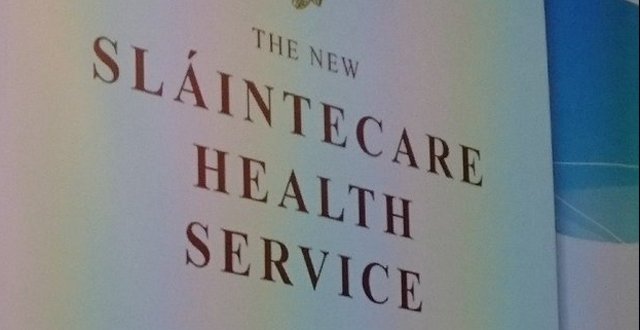
Sláintecare is unlikely to provide the
solution to the problems of the health service
Three cheers for Sláintecare! During the general election 2020, we were spared the usual rubbish from politicians about healthcare. Each party in turn hid behind the fig leaf of Sláintecare.
I was glad. Consider the last few elections. In 2007, the
general election was all about co-locating commercial private hospitals on
public hospital land. That would be unthinkable now. The 2011 election promised
universal health insurance, which makes everyone a private patient. Since
election 2016, we have Sláintecare, which insists we’re all public patients.
Confused? You should be!
After the election, RTÉ asked me to comment on the case
of Mrs Murphy, from West Cork, who spent days on a trolley. In case the
politicians were on to something, I read Sláintecare a second time. No, it’s
just an aspirational essay, without any real answers.
Whenever a report emerges, I look for a solution to the
trolley problem. Sláintecare’s big idea is that hospital capacity will be
increased by having more primary and community care, better integration of
care, and by abolishing private practice in public hospitals. Sorry, lads, that
ain’t gonna do it. By the way, the terms of reference state that the best
outcomes and value for money are in primary and community care, so I reckon the
solutions were chosen before they started.
My mind wanders back to the disastrous 2007 bed capacity
report written by management consultants. I’m probably the only person who
plodded through all four volumes and I spoke to people who did the extensive
hospital surveys. Based solely on the medical file, they had to guess (my
choice of words) what was needed to discharge patients. If I did that in real
life, I could be sued for negligence. This ridiculous “research” concluded that
Ireland needs only 9,000 hospital beds, provided we move to a model of
community care.
Bad reports can have serious consequences. Our great
tragedy is that the HSE followed the 2007 report as a blueprint. For a decade,
instead of adding beds, hospital wards were closed at every opportunity, aiming
for the magical 9,000 beds. That madness has finally stopped: New wards have
opened, but according to a senior HSE manager, there are 90 beds fewer now than
in 2009. Meanwhile, the population heads towards five million.
So that is why the trolley crisis became worse each year,
not better. That is why generations of medical students think it’s normal for
patients to be in an emergency department (ED) for days – until they see a
functioning hospital system in Australia.
I get angry at physicians and surgeons for saying
nothing, leaving it to the ED people. I’m sorry, it’s not enough to just treat
the trolley patients.
I get so very angry because I’ve experienced it with my
own family and friends, and also through patients. In 2003, my mother was on a
trolley overnight in St Vincent’s Hospital with a badly broken arm. She didn’t
mind. But more wards closed; now seriously ill patients can’t get to a ward and
are stuck on trolleys. People close to me have been overnight in ED with heart
rhythm problems, bowel obstruction, and stroke with seizures. Patients have
said “I’d rather die” or “put me down” when faced with ED again.
Mrs Murphy’s story is really very boring. It happens
every day, in every Irish hospital. The GP was concerned about a possible
stroke. Despite health insurance, a private hospital sent her on to public ED,
where she spent days on a trolley. In fact, she had infection and fluid
overload; following “phenomenal” treatment, she is recovering. Her 90-year-old
husband simply couldn’t bear to see his wife’s misery and distress at the
chaotic surroundings.
Here’s a question. Did the Sláintecare people know how
many trolley patients are like Mrs Murphy? How many are referred by a GP? How
many with health insurance? They couldn’t: The HSE doesn’t collect that data.
I’m guessing (my choice of words) they don’t know that when 600 patients are on
trolleys, all we know is that they were accepted for admission, but couldn’t
get a bed. I’m guessing they don’t know you must be in the whole of your health
to go to a private hospital. Go right ahead: Take private care out of public
hospitals. Mrs Murphy will still be on that trolley.
The scary bit is that Sláintecare could make it all much
worse. Giving away free GP care could overload general practice, and make it as
dysfunctional as the hospitals. Meanwhile, abolishing private practice in the
hospitals will cut €650 million from the €4.4 billion budget. Instead of
necessary hospital treatment, Mrs Murphy could be told to stay in West Cork
with home help. That’s community care.
Would Mrs Murphy
and her family give three cheers for Sláintecare? Two cheers? One cheer? I
wonder.





Leave a Reply
You must be logged in to post a comment.